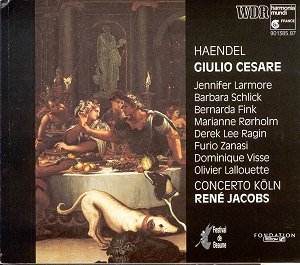 Composer: Pyotr Ilyich Tchaikovsky
Composer: Pyotr Ilyich Tchaikovsky
Works: Symphony No. 4, Francesca da Rimini
Performers: London Symphony Orchestra/Georg Szell, New Philharmonia Orchestra/Lorin Maazel
Recording: 1971 (Francesca), 1972 (Symphony No. 4)
Label: DECCA
Tchaikovsky’s Symphony No. 4 stands as a monumental testament to the composer’s emotional depth and his struggles with fate, a theme that resonates throughout the work. Premiered in 1878, this symphony captures Tchaikovsky’s tumultuous psyche, often wrestling with the dichotomy of despair and triumph. The work, alongside the lesser-known yet equally poignant “Francesca da Rimini,” showcases the composer’s ability to merge the dramatic with the lyrical, reflecting the Romantic era’s preoccupations with human emotion and narrative.
Georg Szell’s interpretation of Tchaikovsky’s Fourth Symphony with the London Symphony Orchestra is a compelling blend of vigor and meticulous architecture. Szell, known for his clarity and precision, imbues the first movement, “Andante sostenuto – Allegro con anima,” with an exhilarating energy that underscores Tchaikovsky’s emotional contrasts. The orchestral balance is particularly commendable; the strings deliver the sweeping melodies with a robust lyricism, while the brass section punctuates with a boldness that underscores the music’s inherent tension. Notably, the closing moments of the “Moderato con anima” reveal Szell’s knack for shaping climaxes with a dramatic logic that feels both organic and inevitable, providing a thrilling conclusion to the movement.
In contrast, Lorin Maazel’s handling of “Francesca da Rimini” presents a broader interpretative canvas, emphasizing the lyrical and thematic continuity across the work’s expansive structure. Maazel’s approach reveals a lushness in the woodwinds that creates an inviting soundscape, though it occasionally strays into treble-heavy territory, particularly in the strings. The brass, in a quintessential display of “Muscovite abandon,” captures the raw emotional intensity of the narrative. While Maazel’s interpretation lacks the ecstatic wildness of Stokowski’s earlier efforts, it offers a disciplined yet impassioned reading that serves to highlight the symphonic nature of the piece, challenging the notion of “Francesca” as merely a tone poem.
The sound engineering of both recordings presents a mixed bag; while Szell’s Symphony No. 4 benefits from a well-crafted orchestral balance, the audio fidelity does show signs of age, leaning towards an irritating treble syndrome that detracts from the listening experience. Comparatively, the sound captured during Maazel’s sessions lacks some of the crystalline clarity found in Erik Smith’s recordings of Sibelius, suggesting variations in the recording venue or microphone setup. Nevertheless, the sheer musicality on display, particularly in Szell’s definitive reading, compensates for these technical shortcomings.
Both performances serve as enduring interpretations of Tchaikovsky’s works that continue to resonate with listeners. Szell’s symphonic clarity and Maazel’s lush, narrative-driven approach each offer unique insights into Tchaikovsky’s rich tapestry of emotion and drama. These recordings, while not devoid of technical flaws, invite repeated listening and exploration, enriching one’s understanding of Tchaikovsky’s profound musical language. The artistry of both Szell and Maazel ensures that these recordings remain vital contributions to the canon of Tchaikovsky’s orchestral repertoire, each offering a distinctive lens through which to appreciate these masterpieces.



